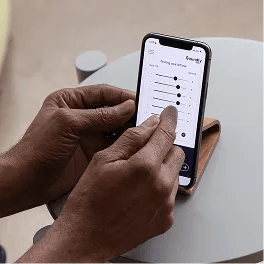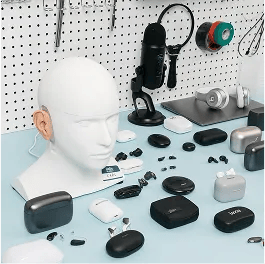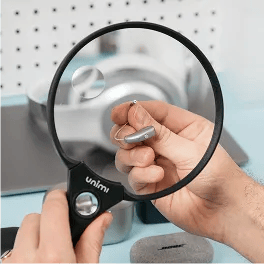Key Takeaways:
- If you have hearing loss and have trouble hearing on the phone, you may benefit from assistive phone technology.
- Cell phones, amplified phones, and caption phones offer different options for enhanced communication and clearer understanding.
- Caption phones are available without cost for users who have hearing loss and struggle with phone communication (see below).

For those who are hard of hearing, communication over the phone can be challenging. Fortunately, many tools and products are available to make this process much easier. From cell phones and amplified devices to caption phones, plenty of options are available to suit different lifestyles, needs, and budgets.
Read on to find out what to consider when looking for a phone that assists the hard-of-hearing user.
Phone Communication for Hearing Loss
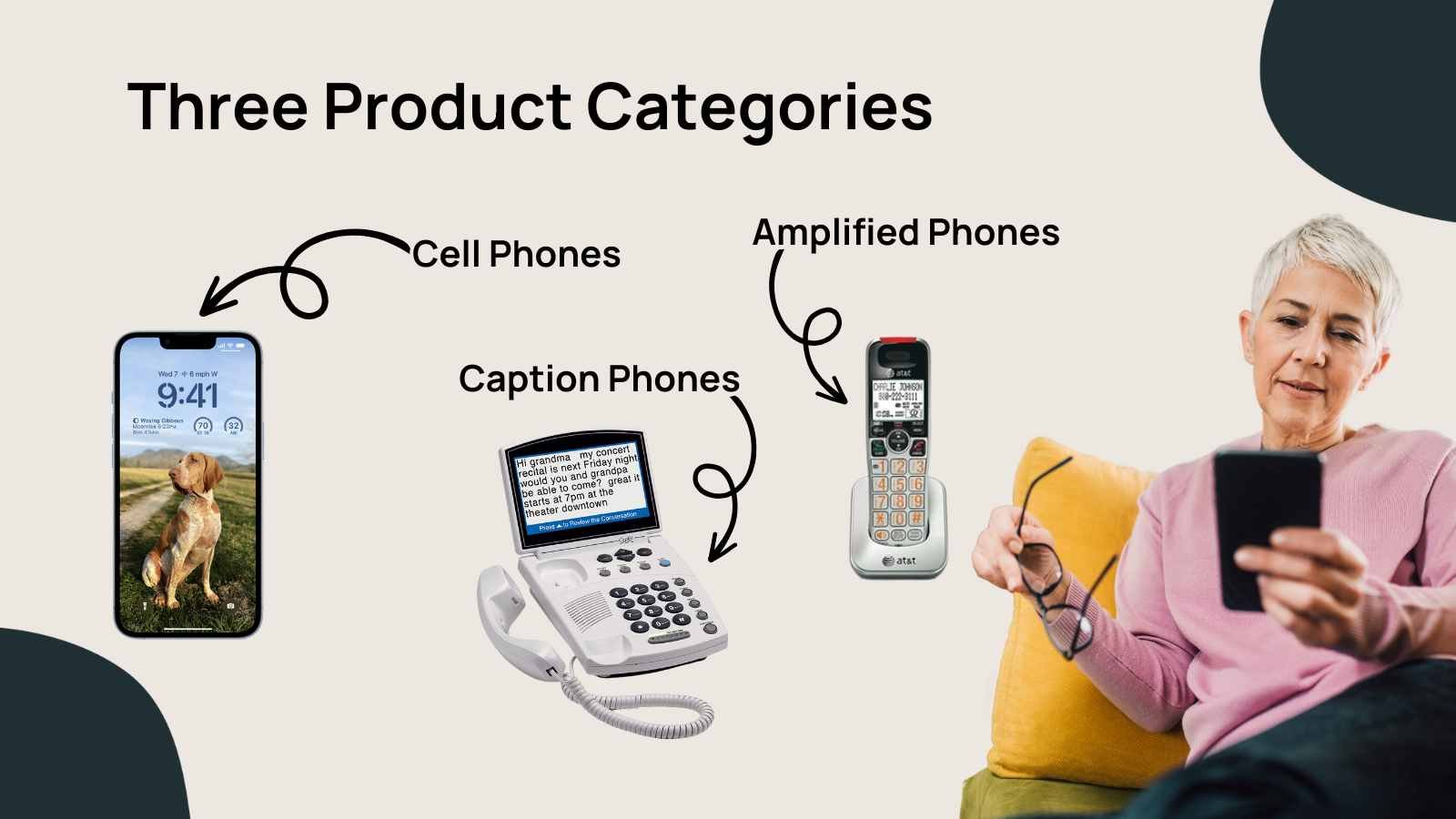
Talking on the phone can be frustrating for those with hearing loss. Regardless, phone calls remain an essential means of communication for staying in touch with loved ones or receiving important information.
Fortunately, there’s quite a few offerings available to make phone communication easier for people who experience mild to moderate hearing loss. We'll go through several product categories: cell phones, amplified phones, and caption phones.
Cell phone manufacturers make compatible options for hearing aid users so that phone calls have better volume and considerably less interference. Several phones come equipped with features that improve clarity and volume levels, and other phones also offer amplified speakers for those who don't use hearing aids. Another product category is captioned phones, which provide text the user can read.
Prefer to read captions? Caption phones can provide the clearest communication (some of my cochlear implant patients opt for caption phones), while other people may prefer an amplified phone or app to boost the volume.
Cell Phones for Hard-of-Hearing Users
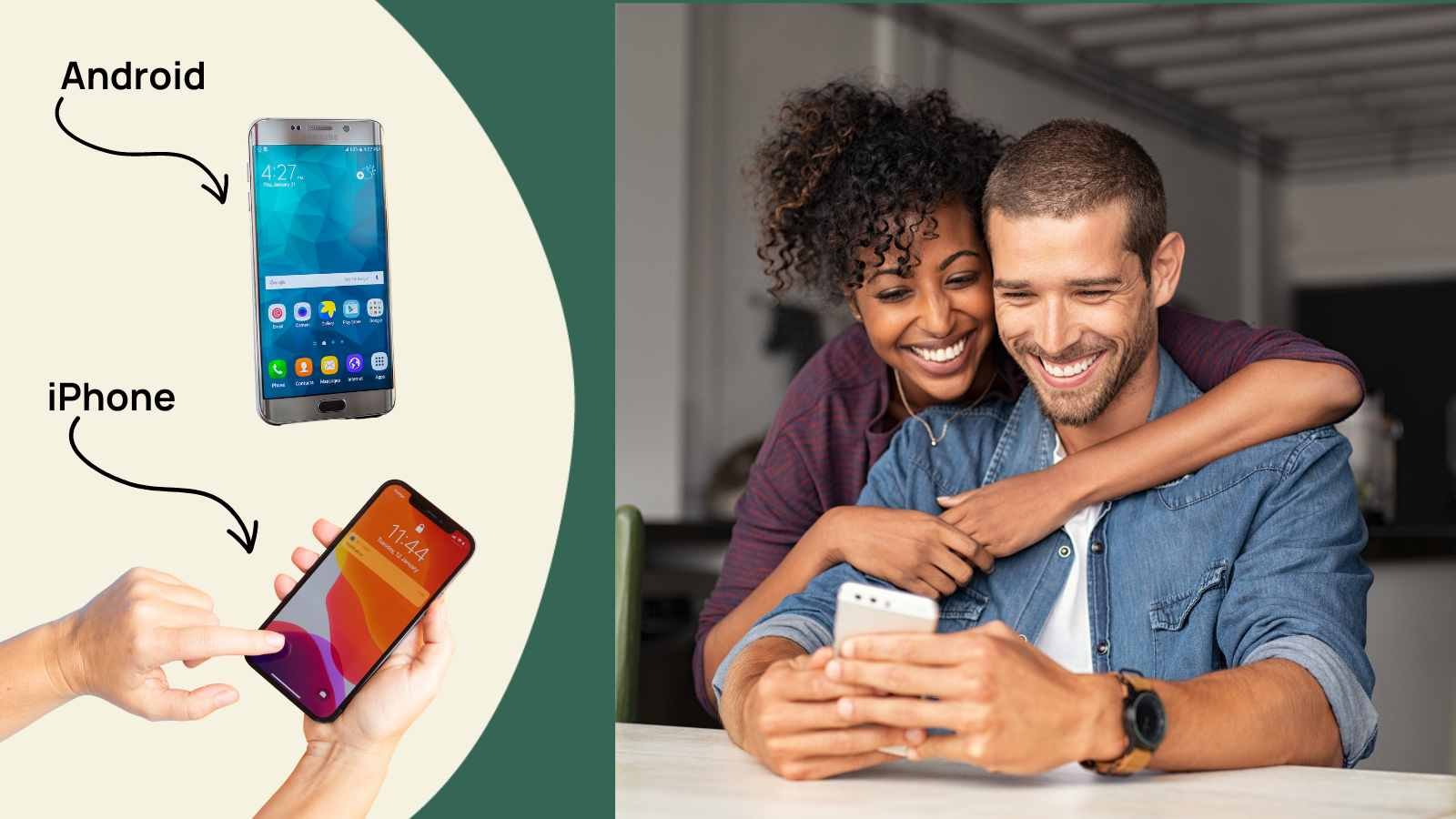
Cell phones come with various features that can help make the device more accessible for people with hearing impairments. The FCC Hearing Aid Compatibility (HAC) regulations ensure that each manufacturer provides a selection of cell phones that are HAC-compliant for use with hearing aids or cochlear implants.
Two important points to know when considering your options are:
- The level of noise interference
- The telecoil option
Note: Not all cell phones are compatible with hearing aids, so it’s essential to know which manufacturer will work best for you. With this in mind, look at a telecom company’s ratings for HAC cell phones, which are listed by M and T ratings.
What is an M rating?
Cell phones with hearing aid compatibility are less likely to have noise from interference, which makes it easier to hear on the phone. Cell phones have an M rating to denote interference potential, ranging from 1 (lowest) to 4 (highest). The M rating allows you to use your cell phone on the microphone setting, and the higher the rating, the less interference you receive in the microphone setting.
What is a T rating?
The T refers to the telecoil setting on your hearing aid. If your hearing aid has a built-in telecoil, you can turn up the volume higher without getting feedback from the phone or background noise. This feature works exceptionally well for those with more hearing loss. Similar to M ratings, T ratings range from 1 (lowest) to 4 (highest).
Smartphone Product Choices
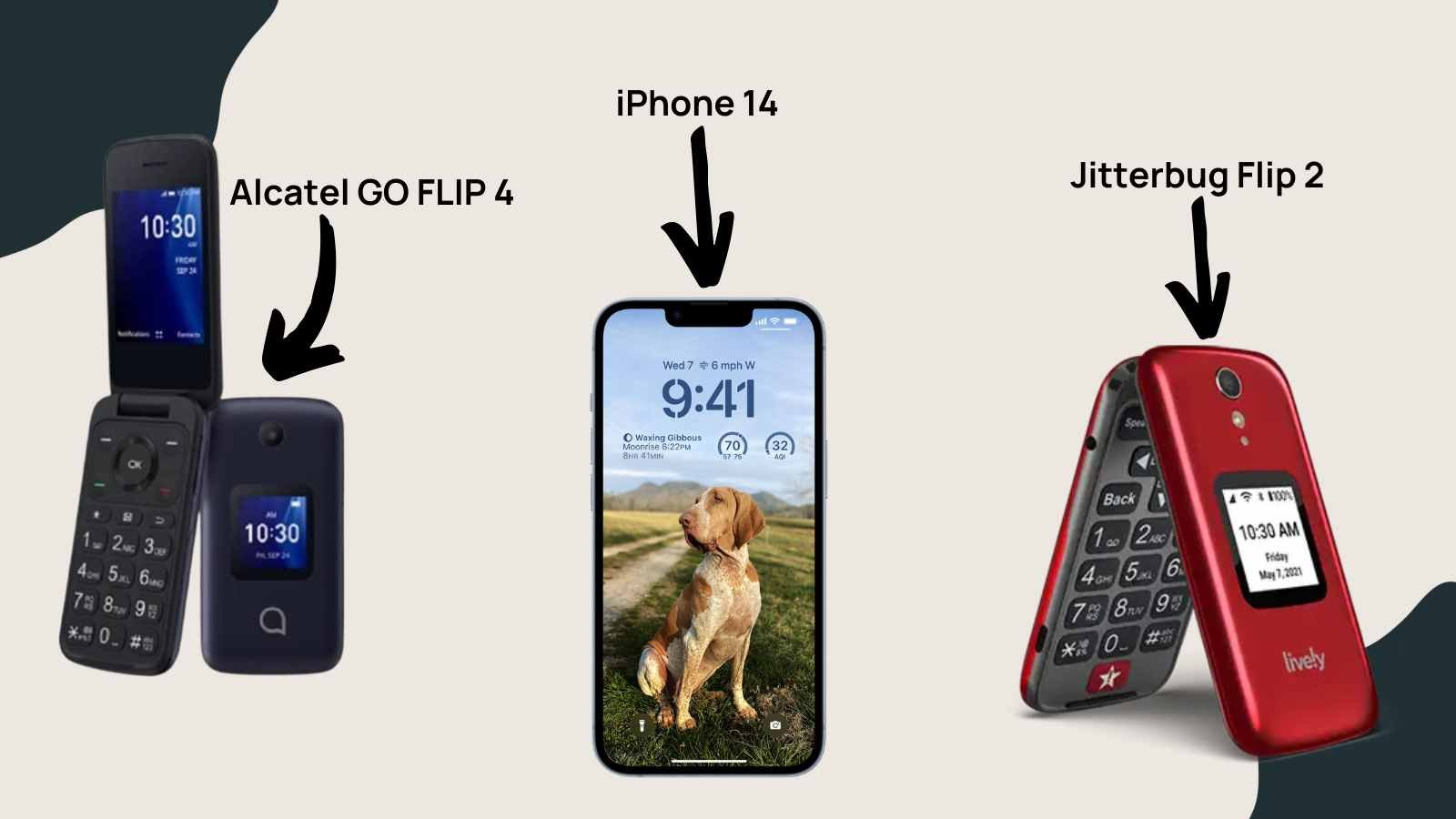
Now, that you’re prepped on available specs and features, here are some HAC-compliant cell phones:
1. Alcatel GO FLIP 4 from T-Mobile
This phone offers an M4/T4 rating. Its large keypad also makes it easy to use and the Bluetooth compatibility works for those looking to connect BT-ready hearing aids. This budget-friendly option is a good choice for an HAC-compliant cell phone. However, the camera on this phone could be better.
2. Jitterbug Flip2 from Lively
This phone is an excellent option for seniors living alone because it doubles as a medical alert device, too. Its M4/T4 rating ensures a high-quality connection with hearing aids for good audio quality, and it offers a simple, easy-to-use design with large buttons. This is another excellent budget-friendly option to consider.
3. iPhone 14
Apple recently added a live captioning feature with the operating system, iOS 16. iPhone 14 has an M3/T4 rating, offering other useful accessibility options and a high-quality camera. For example, LED flashing lights for incoming calls, live captions, and phone noise cancellations. Most hearing aids, including app features, are also compatible with iPhones. This phone comes with a higher price tag but it may be worth the investment, depending on your lifestyle.
You may also want to consider an app that boosts volume. If so, look at these two applications:
- Volume Boost Sound Amplifier (iOS)
- Volume Booster - Sound Booster (Android)
These apps can be an alternative to a compatible cell phone. To use the app, you'll need to download it on your iPhone or Android device. Then, you'll be able to adjust the volume to the level you prefer when taking phone calls.
Amplified Phones for Hard-of-Hearing Users
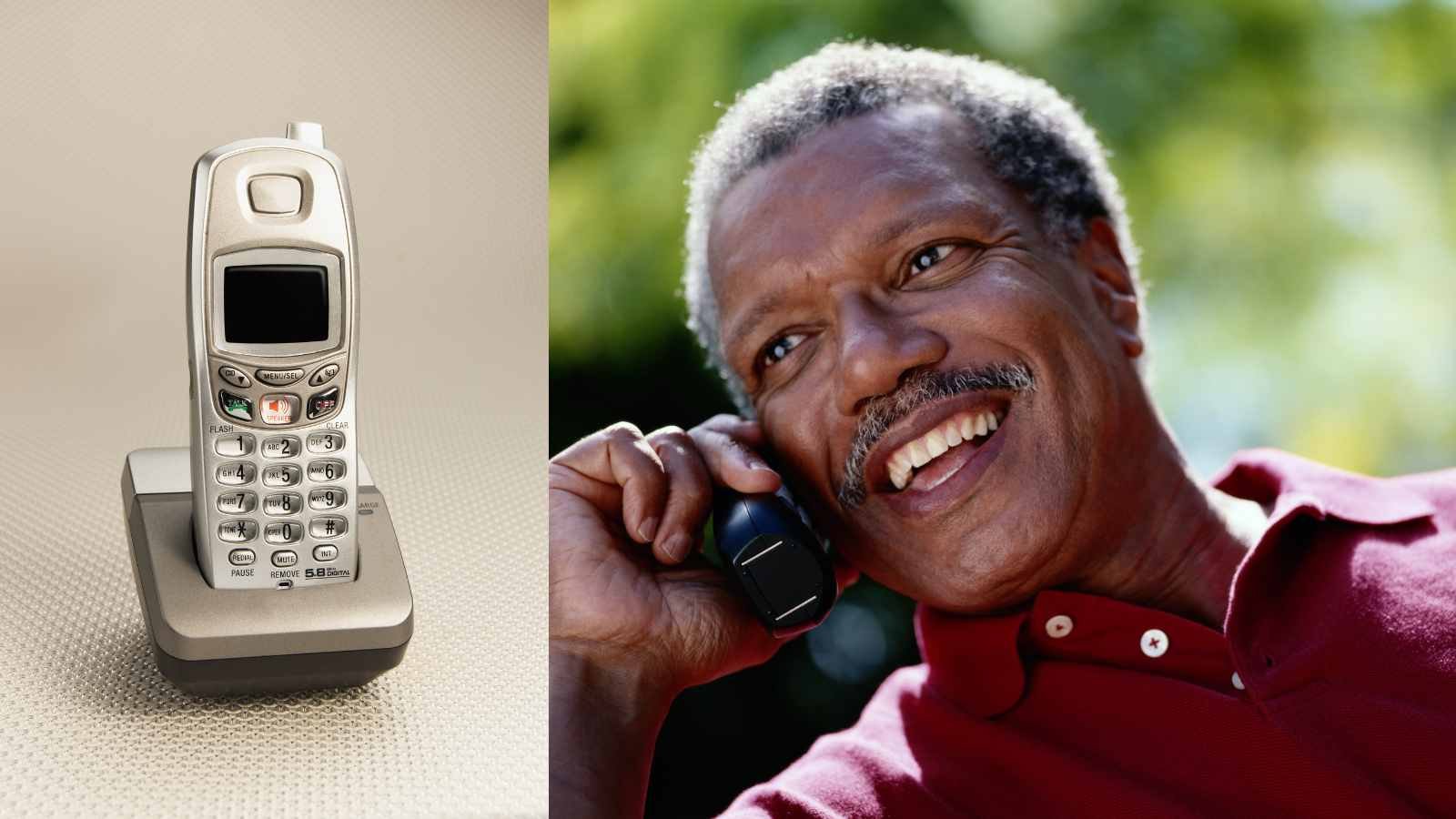
Amplified landline phones are explicitly designed for hard-of-hearing users and feature adjustable sound settings to find the perfect amplification level for your needs. These devices usually come with adjustable tone control, noise reduction technology, caller ID, alert tones when the phone is off the hook, and digital clarity amplifiers to ensure crystal-clear audio quality (even in noisy environments). It’s essential to consider your lifestyle needs when shopping for an amplified device; some models may be too bulky, or have too many features that don’t fit your specific requirements.
Landline Product Choices
.jpeg)
1. Panasonic 2 Handsets Expandable Cordless Phone with Easy Read Display
This phone is hearing aid compatible and has several useful features, such as a large illuminated keypad, a wide volume range for good audibility, a high-quality speakerphone with enhanced clear voice, and a locator button to find misplaced handsets.
2. AT&T CRL32802 DECT 6.0 8 Handset Cordless Phone
This phone features clear calls, extended range coverage, interference-free calls, large buttons, a backlit LED display, audio assist technology, and compatibility with hearing aids.
3. VTech 2 Handset Extended Range DECT 6.0 Cordless Phone with Answering System
With this phone, you'll be able to amplify incoming sound by an additional 35 decibels compared to a standard phone volume. There’s a handset speakerphone for easy hands-free calls, and the large font and bigger button size are easy to read. This landline phone is a good option for those with mild to moderate hearing loss.
Caption Phones for Hard-of-Hearing Users
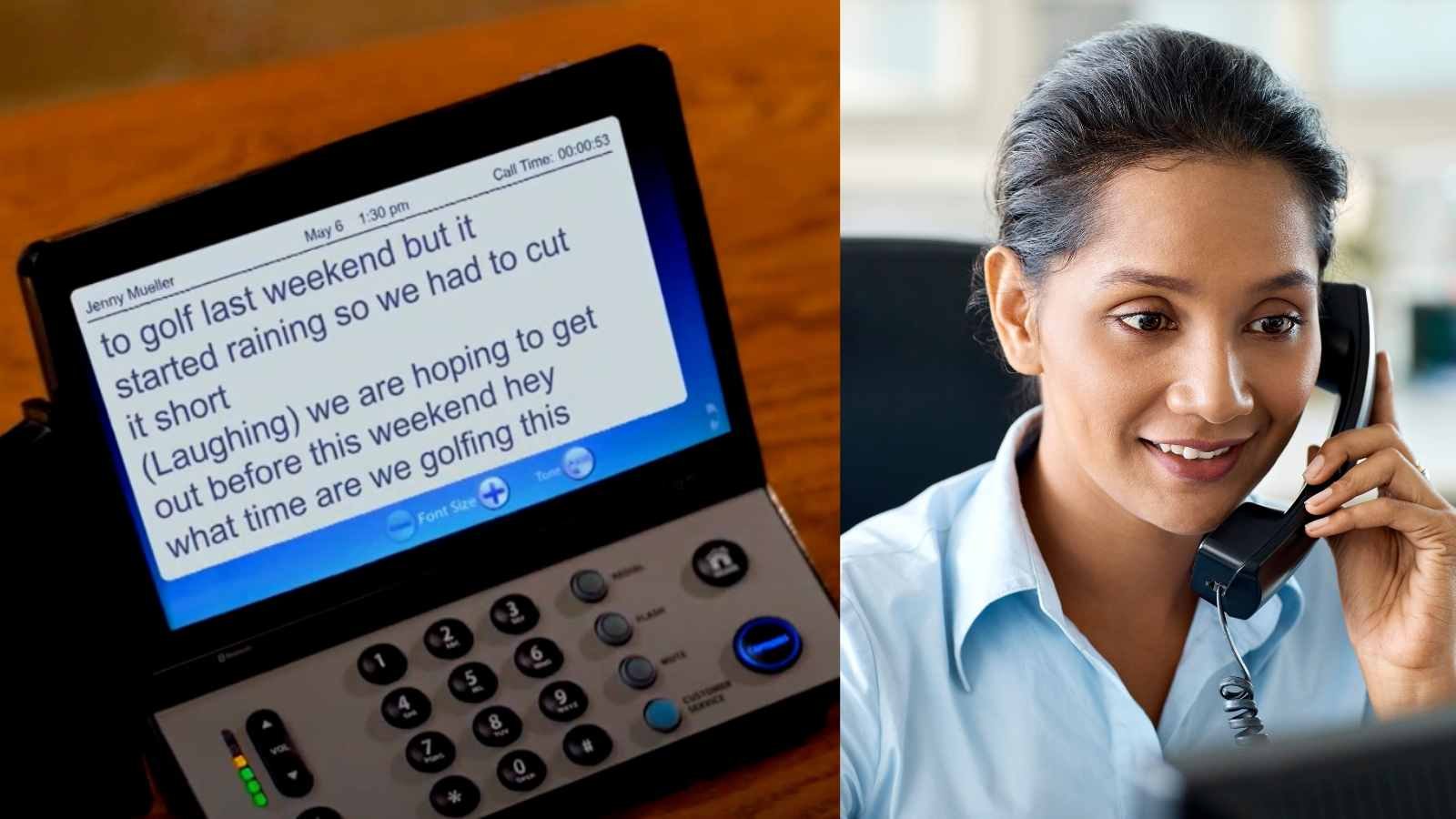
Caption phones use captioning services to display conversations on the screen in written form as it occurs in real time. The text makes it easier for hard-of-hearing users to communicate over the phone without worrying about missing details or struggling to understand what is being said. Caption phones have advanced features like call recording capabilities, adjustable font sizes, and enhanced readability settings. For example, the user can adjust the phone depending on how much you need to amplify the conversation or reduce background noise interference. In addition, CapTel offers phones at no cost for those who qualify.
Caption Phone Product Choices
.jpeg)
1. CapTel 840
This phone works well for those who don't have an internet connection, as it uses a standard telephone line. It is also hearing aid compatible and has adjustable font sizes for increased visibility. But, this phone does not offer a touchscreen.
2. CapTel 2400i
Are you looking for Bluetooth connectivity? This phone features an internet connection option, Bluetooth options, a speakerphone, a touchscreen, volume adjustment, and a large display.
Another excellent option for a caption phone. This one features a built-in speakerphone, hands-free calling function, caption speed options, and answering machine or voicemail options.
Conclusion
It's great to know that communication over the phone can be accessible if you're hard of hearing. With all these options available, from cell phones and amplified devices to caption phones, you'll be sure to find something that fits your lifestyle needs and budget. Be sure to research each type of product before making a purchase decision, so you know exactly what you're getting into before making your selection.




